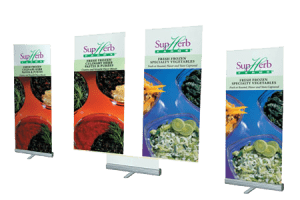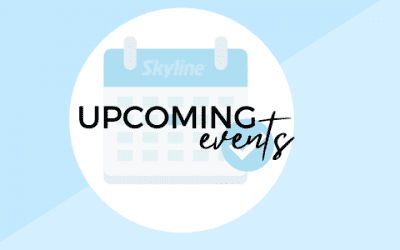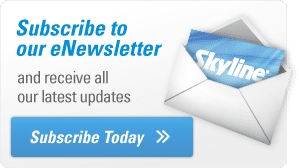Written by Matt Bohar, Skyline Exhibits
Is your company not generating enough leads from your website? The most common misconception is that low website traffic must be the root of this problem. As a result, many companies invest a majority their digital marketing dollars into Search Engine Optimization (SEO), Pay-Per-Click Advertising (PPC), stepped-up email campaigns and other methods of increasing their overall website activity.
The truth? You can drive all the traffic you want to your site but it won’t result in a noticeable uptick in leads unless you provide visitors with a compelling reason to complete your website forms. In this post, I’ll discuss how to maximize the percentage of website visitors who fill out your forms, minimizing those who surf your site anonymously before leaving.
YOUR WEBSITE AS A TRADE SHOW BOOTH
Just as the majority of trade show attendees aren’t going to march straight into your booth to complete an onsite sale, the majority of your website visitors aren’t going to rush to your contact us page to fill out a quote request form. Website traffic and trade show traffic are both  primarily composed of prospects who are in information-gathering mode, rather than buying mode (especially in today’s digital era). And just as a good booth staffer “works the crowd” to get attendees to engage and reveal information about their business development plans, your website needs to actively pull visitors out of anonymous lurk mode, converting them into soft leads that can be actively qualified and nurtured.
primarily composed of prospects who are in information-gathering mode, rather than buying mode (especially in today’s digital era). And just as a good booth staffer “works the crowd” to get attendees to engage and reveal information about their business development plans, your website needs to actively pull visitors out of anonymous lurk mode, converting them into soft leads that can be actively qualified and nurtured.
CONVERSION FORM PLACEMENT
The placement of your website’s forms is one key to achieving this. Since most site visitors view only one or two pages before they “bounce,” conversion forms must be placed in high-visibility, high traffic pages.
Your home page is a primary port of entry for many visitors, so some form of conversion form (even if it’s only an e-newsletter signup) should be prominent here. If your business focuses on a very clear and defined service or class of products, a home page submission form allowing a downloadable catalogue or buyer’s guide may be prudent. But too often, businesses instead provide this rich content via their navigation menu in the form of an ungated pdf, instantly viewable to all anonymous site visitors. By requiring users to sign-up to view this content, you can capture their names, phone numbers and/or addresses, and follow-up with them via phone, direct mail or email.
If your business instead offers a diverse set of products or services, your home page is likely too early in the traffic funnel to try to capture these leads. In such situations, you are often better off having a series of individualized sign-up forms on each of the second-tier site pages that list your unique categories of products or services. Each form might then offer a slightly different download, specific to that page’s class of products or services. This is something we do at Skyline that has proven to work very well for us.
Where you place a form on these pages can also be critical. If your visitors rarely scroll to the bottom of your pages (tools such as Hotjar or Google Page Analytics can reveal how much of your page content is being seen by users), then placing your forms “above-the-fold” is important. If your website has an editorial-style design (with large blocks of text accompanied by a narrow, right-hand column full of ads and graphics), you should consider placing your webforms in-line with your articles, rather than in that often-ignored sidebar area.
CALLS-TO-ACTION
The specific type of value-added content you provide via these signup forms may vary. It might be a coupon, a contest, a self-quiz, a white paper, a case-study, a video or an in-depth how-to article. If you sell custom or intangible services (ex. software or consulting services), offering a download of yet another piece of text-based content may not be effective. You may need to demo what your products and services can do, so offering a sign-up for a webinar, lunch-and-learn seminar or other interactive events may be a better way to hand-sell your company’s offerings. Whatever your high-value offering is, make sure its topic is directly related to the content of the associated landing page and signup form. Again, this is something we do here at Skyline to great effectiveness.
FORM DESIGN
Minimise the amount of effort users must make in completing your forms. If you don’t plan to do direct mail marketing, don’t bother asking for full addresses. Don’t ask for a phone number if you don’t have a dedicated sales rep our outsourced call centre willing and able to place follow-up calls. When possible, utilise smart forms that will pre-populate fields with users’ previous, third-party form data. Most marketing automation programs have this capability built into the software.
If you have to include demographic fields to help you pre-screen leads, using radio button checklists and image/graphic-based selection choices to minimize the amount of typing the user must do. When you need to collect extensive information from a prospect, breaking your forms into multiple screens (rather than one, long and busy form) can make them appear less complicated. The fewer form fields you require, the higher your conversion rates will be. We have tested this several times and found short forms always do better and lead to higher submission rates.
Lastly, always preview your forms on a smartphone, as completing complex forms is much more difficult for mobile users. This is especially important today!
Effective website conversion optimisation isn’t rocket science, but it does require careful planning and design.
For more trade show tips, click here.









